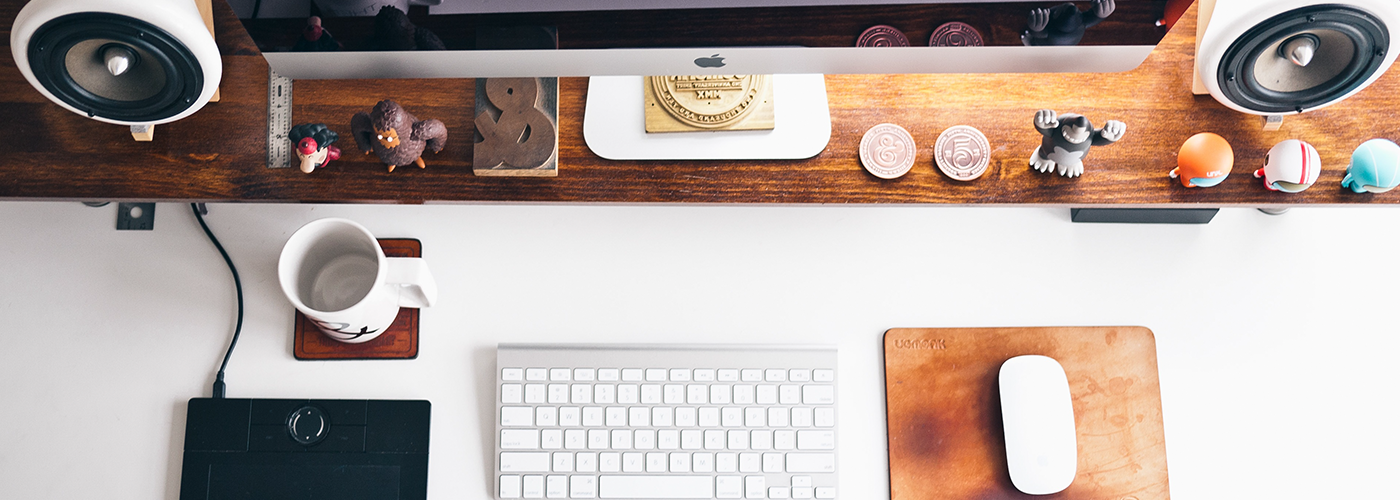The unlikely location of my first workplace was a dark crawlspace underneath a neighbor’s house. This is where I first learned the value of hard work, the joy of helping others, and the many other life lessons that a father can teach a son while holding a blowtorch.
This place and the many others like it — places where I would help my dad replace rusty hot water heaters or make emergency plumbing repairs — were also where all of my expectations for the workplace would be formed. My experience at every subsequent summer job, college internship, or corporate office position would be measured by my experiences installing plumbing lines and fixing cars. What I learned from those early work experiences was that I preferred work where I had autonomy. I wanted a workplace where I could physically engage in my space with room to move around and choose the right place, time, and way to do a task.
Your employees’ needs will change, and with it so should their space. Tweet This Quote
In the nearly thirty years since my dad first started dragging me out of the house on Saturday mornings, I had a lot of opportunity to study the workplace and the impact it has on people. I quickly learned I was not alone in wanting more independence in my workplace. Over time, I confirmed that even the most focused and task-oriented individual could respond positively to a workplace that empowered their own decision-making and choice of work styles.
As an interior designer, I have worked with large corporations and federal agencies to create new work strategies and flexible workspaces for their employees. These places empower and engage everyone within an organization to reach their potential, which is sometimes easily missed because we fail to step back and see how our workplaces align with the unique needs of every individual within them.
With a little empathy and experimentation, you can help your team design their optimal work environments — and you can start with the space you already have.
Give Your Team the Freedom to Choose and Create
Empowering your team to have more control over their individual work setting is the simplest and most impactful thing you can do. Give team members the explicit freedom to leave their desk and choose better settings for different kinds of work. Allow them to modify their space to better meet their needs. If your workplace is small, consider allowing employees to work from locations outside the office. If it is large, consider encouraging them to wander and seek out different experiences.
Give team members the explicit freedom to leave their desks and choose better settings for different kinds of work. Tweet This Quote
Once you empower them with the ability to choose alternate work locations or to modify existing ones, give them permission to move to them throughout the day. Work with your team to create destinations within your workplace by carving out spaces for specific types of tasks.
Consider quiet areas for privacy and heads down work, open active areas for collaboration, and collision spaces where people can come together unexpectedly. Incorporate places with physically engaging postures that require standing instead of sitting, and provide others that are more relaxed. This can be as simple as removing tables and chairs from a small conference room to create an active brainstorming space. If standing is not your thing, try using lounge furniture, bean bags, or yoga mats. Make it OK to move around to these different locations throughout the day, and think about encouraging different postures within each of them.
Understanding Empathy Zones and Work Modes
Our ability to perform creative or knowledge-based work is directly related to how well we manage our ability to both think and feel. Our fluctuating cognitive and emotional states can create opportunities as well as challenges in our workplace and with our co-workers. Understanding these ever-fluctuating states and aligning them with your workplace is a great step towards empowering your team and allowing them build empathy with their fellow team members.
Consider thinking about your space along the following matrix, which gives us insight into each team member’s desire for social or private interactions, as well as their ability to learn or apply knowledge. Use this model to create distinct spaces or empathy zones within your workplace that better support the needs of your team.
Social + Applying
Team members deeply understand their task and choose to work and apply their knowledge/skill in a social and collaborative environment. As a suggestion, try creating shared workspaces in an open public area for multiple team members to come together at the same time, but work on divergent tasks. This could be a single large shared table or numerous individual work areas in a close open area.
Social + Learning
Team members are unfamiliar with or are learning a task and choose to work in a social setting alongside peers for assistance and mentorship. Try creating small collaborative areas just large enough for several people to come together. Locate this space close to or within primary work areas, so they are easily accessible and quick to utilize.
Private + Learning
Team members are unfamiliar with or are learning a task and choose to work alone or one-on-one for assistance. Try creating small private areas where two team members can come together to share a task or seek mentorship. These spaces should be located in remote locations of your workspace.
Private + Applying
Team members deeply understand their task and choose to work alone in order to focus or out of a desire for privacy. Try creating individual private areas where individuals can break away to focus and work without distraction.
Work with your team to create destinations within your workplace by carving out spaces for specific types of tasks. Tweet This Quote
Start with Simple “Hacktivities”
Looking for a great way to get started? Try these Hacktivities and record what you learn along the way. Gain empathy for your team and use this learning to make changes that matter in your workspace.
30-Day Nomads
Unassign all offices, desks, or workstations for one month. Give every person in the organization the opportunity to choose any workspace at any time. Have the team use a log to identify which spaces they used, why they used them, and if they worked for them. Use your results to shape any changes you wish to make.
Shadow a Colleague
Spend one day following the daily movements of a team member. Observe and record their typical daily activities and what pain points exist within their work environment. Use the framework below when recording your observations.
- See: What do you see? Identify the people, places, and things you find interesting or important. Be as objective as possible in your description.
- Think: What do you think about this observation? This is your interpretation of the factors, motivations, or influences at play.
- Wonder: What does this make you wonder? Write down the questions that this observation brings to mind.
Make-a-Space
Challenge your team to modify the entire workspace using cardboard or other manipulative materials. Allow them to move freestanding furniture, build cardboard shelters, screens, totem poles, whatever! The only rule is that the space they create can only exist for 48 hours. Then, they have to tear it down and build something completely different. Have the team record what they have learned, including the ideas they liked and those that fell flat. Use those ideas to make future improvements.
It is our jobs as leaders to make sure our workplaces don’t get in the way. Tweet This Quote
Regardless of whatever shape your ideal workplace takes, empowering your team to take an active role in shaping it will always lead to deeper engagement. Remember, however, that the goal is not to immediately land on one ideal solution that works for all people at once, or that lasts until perpetuity, or that can be repeated cookie cutter style from one location to the next.
The solution has far less to do with the physical space you create than it does with the control you are willing to cede to your employees who will create and use it. Their needs will change, and with it so should their space. It is our people who make our workplaces great. It is our jobs as leaders to make sure our workplaces don’t get in the way.
This post originally published in 2016.



